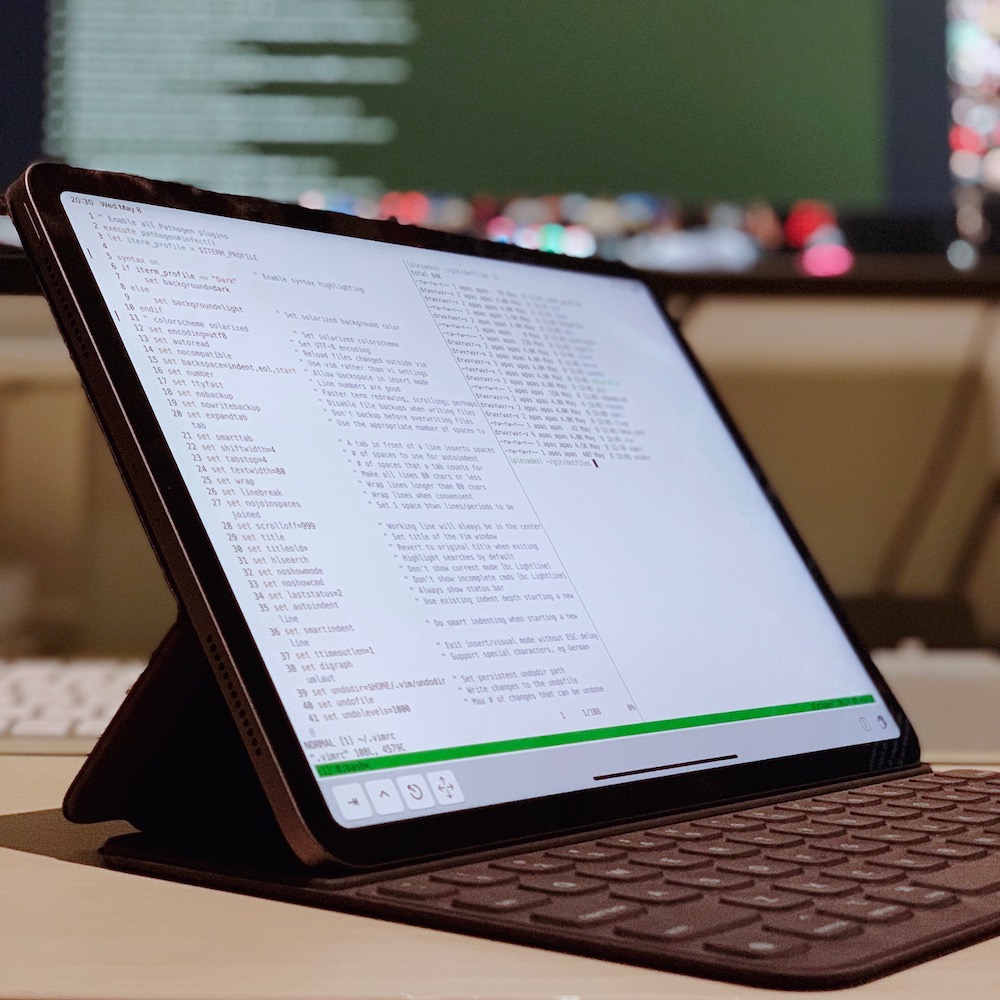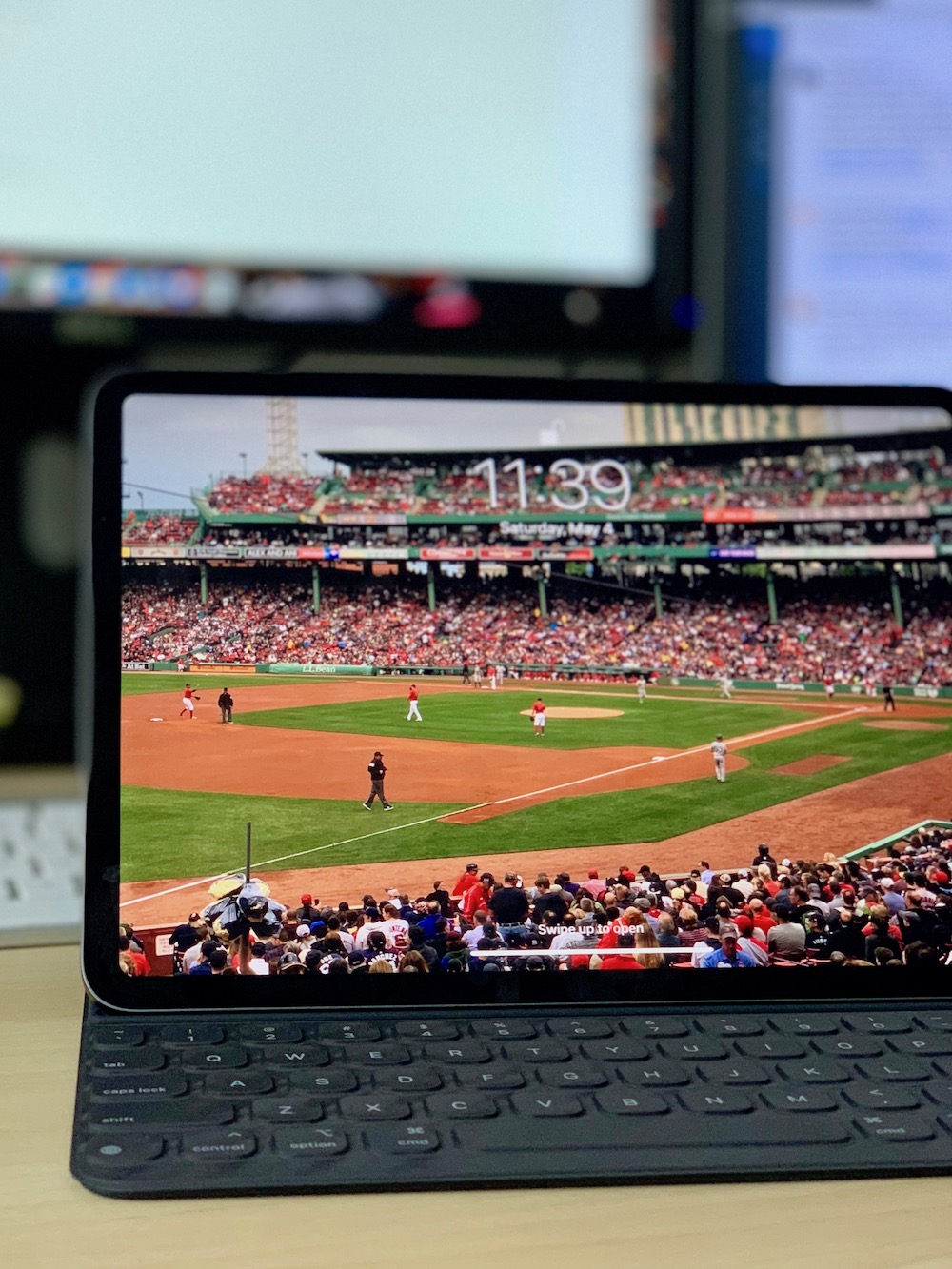About a month ago I bought an 11” iPad Pro. My first iPad was a sturdy 2011 iPad 2 which I used until about 2013. I was never too fond of tablets as they seemed immovable in an indefinite gap between laptops and phones. There are two reasons behind this. First, in retrospective, until iOS 12, the platform wasn’t mature enough to explore and experiment beyond its media consuming roots. Second, every major new computing paradigm requires an adjustment period from both developers and users alike. People need time to figure out things.
These reasons beg the questions: why did I buy an iPad (again)? Is it worth it? The answer to the former is three-fold. My response to the latter is simply yes.

First, I became increasingly convinced that the iPad Pro can be used for real work from posts like Paul’s, Fatih’s, and the ongoing and fascinating iPad saga of Federico Viticci. I enjoyed the depth of Paul’s essay and versatility of use. Conversely, I’m not entirely in Viticci’s “iPad is the future / iPad as a desktop replacement” camp. Mainly because while the concept being certainly doable, the iPad, I think, is not a complete desktop replacement (yet.) Often, Federico goes on extreme lengths to accomplish his professional and personal tasks on the iPad. I like my Shortcuts Some of my favorites: streamlining take off messages (including flight number and tracking link) to our iMessage family group using Tripit’s calendar feature; transcribing Overcast audio segments to Evernote; converting markdown files to PDF using Pandoc; save tweets and Instapaper excerpts to Evernote. and have created a few that really cater to the intricacies of my workflow but I’m neither willing nor interested to rely on them as my only and fundamental pillar of my tech infrastructure and productivity stack. However, I’m willing to admit (and in fact argue in favor of) that there’s “a there, there.” It’s just not all there is.
Second, I love the iPad’s portability. I travel frequently and because of my use case (writing code usually in remote clusters or servers, writing, light media consumption, research, notes, and meetings, The iPad is my favorite device to run Hangouts, Meet, Zoom, and Skype meetings.) I don’t require a workhorse of a machine. Computing requirements are offloaded to the cloud. I value how light a machine is and how long the battery lasts. The iPad is excellent in these circumstances. I was quick to dismiss in the past the Smart Keyboard and similar hardware keyboards as foolish. I was (partially) wrong: the Smart Keyboard is amazing and redefines using an iPad (I still do not like over the top accessories like Brydge.) The iPad Pro form factor is close to, if not, perfect. I suppose if I were more into the creative and design side of things the 12.9” version would make more sense. Since I’m not into drawing, the smaller screen is very comfortable. I can conveniently split the screen and use two apps side by side—even throw in the floating pop-over. iPadOS (due in Fall) will make multitasking even better. I love how easy it is to use Vim with iSH in my Digital Ocean Ubuntu box. Sure, “it’s not a local development environment” but fits my needs And a great deal for only $5 per month with a free domain name and SSL.). Lastly, the battery life is fantastic: miles ahead of my 12” MacBook.
Third, iOS’ maturity—as well as where it’s projected to go. I’m excited about the iPad’s future with iPadOS. In WWDC Apple launched a truckload of great improvements. Not all are relevant to my workflow (for instance, USB thumb drive support in Files) but all are more than welcome. I should note that even before the launch of iPadOS the transition from macOS to the iPad as a near-desktop replacement was very easy. Having the same keyboard shortcuts with macOS helps. My data are already on Dropbox (photos and music on iCloud) so local storage requirements are (almost) a thing of the past. Essentially, my iPad workflow comes close to realize Rob Pike’s computing vision for me:
I want no local storage anywhere near me other than maybe caches. No disks, no state, my world entirely in the network. Storage needs to be backed up and maintained, which should be someone else’s problem, one I’m happy to pay to have them solve.
And,
My dream setup, then, is a computing world where I don’t have to carry at least three computers – laptop, tablet, phone, not even counting cameras and iPod and other oddments – around with me in order to function in the modern world. The world should provide me my computing environment and maintain it for me and make it available everywhere. If this were done right, my life would become much simpler and so could yours.
The iPad is a smart dumb terminal (and much more) and is great at it.

That said, my computing setup now is as follows: a 15” MacBook Pro Retina (the first Retina model launched in 2012; still blazing fast save a few battery and Bluetooth issues) as a desktop always-on computer connected to two monitors, a 12” MacBook and the 11” iPad Pro while I’m out and about, an iPhone XS, and an Apple Watch. The irony pertaining to Pike’s “at least three computers” remark is obvious. However, now I mostly carry the iPad with me leaving the MacBook home (ergo, two devices) and, in the worst case, both are very lightweight and easy to pack. The iPad has not (and most probably will not) replace desktop macOS for me but it’s coming very close to the point where I can be comfortably productive for the majority of my work. At the end of the day, this is a sound compromise I’m more than happy to make.